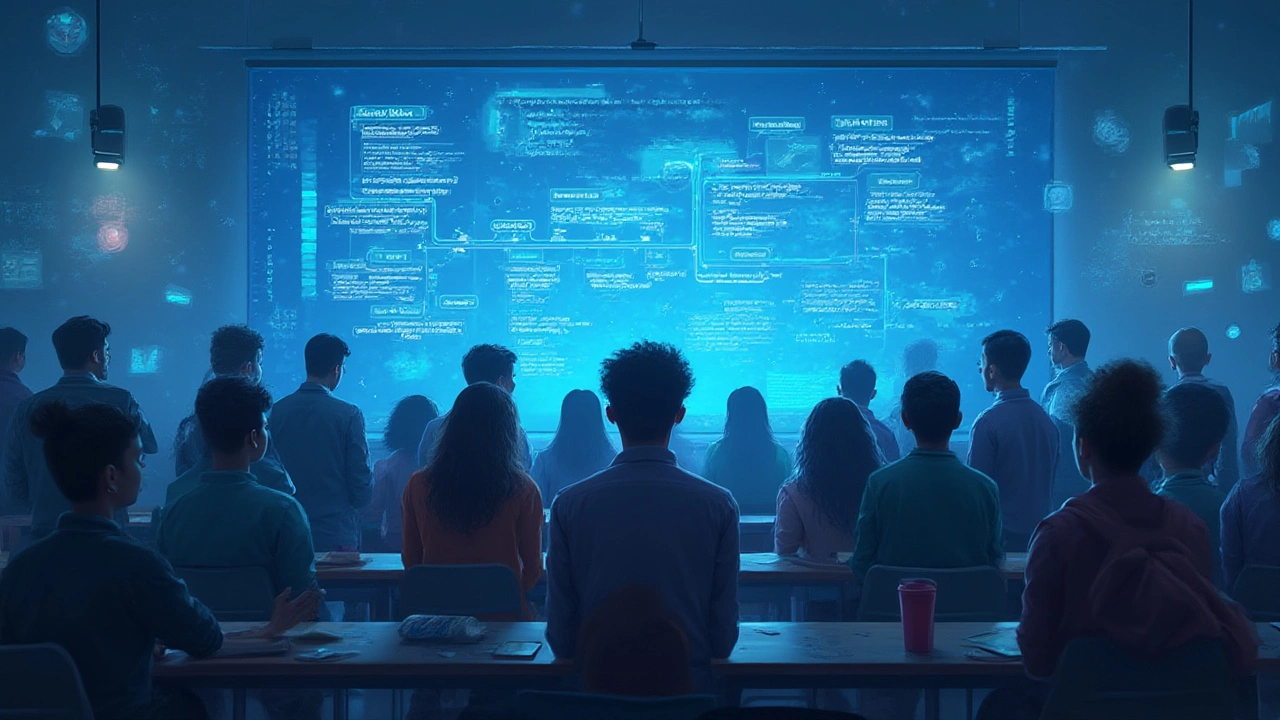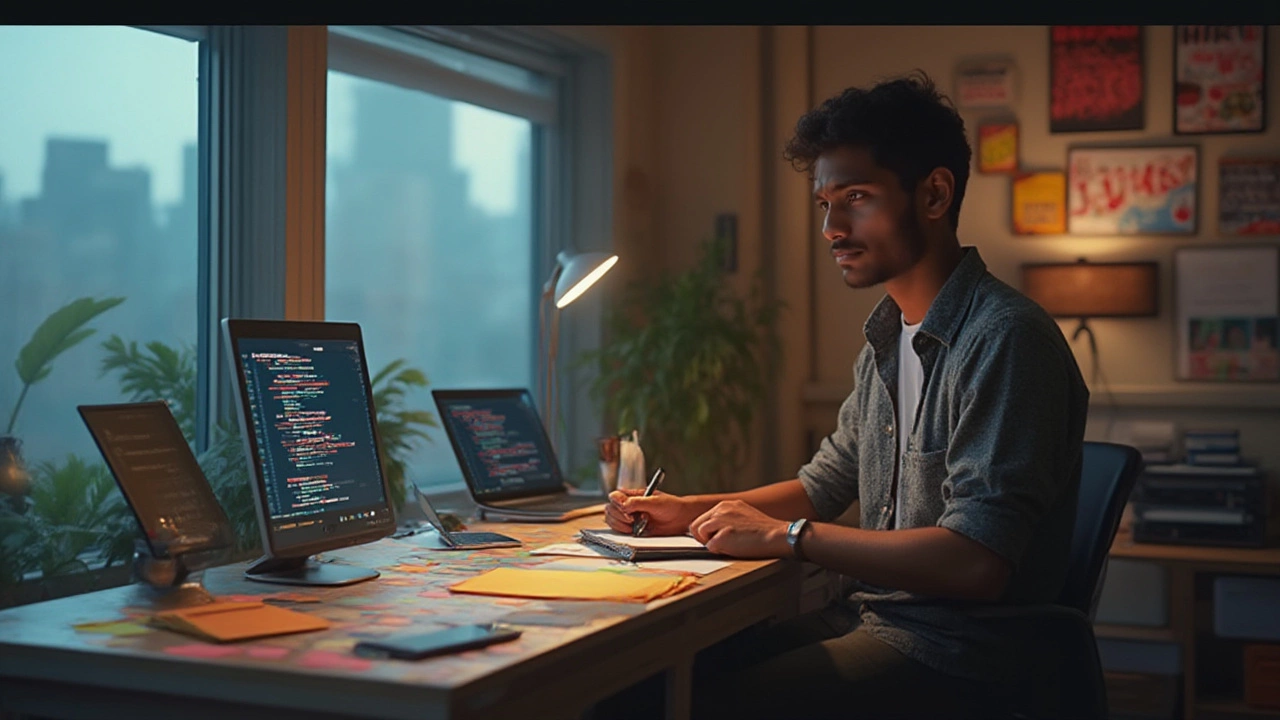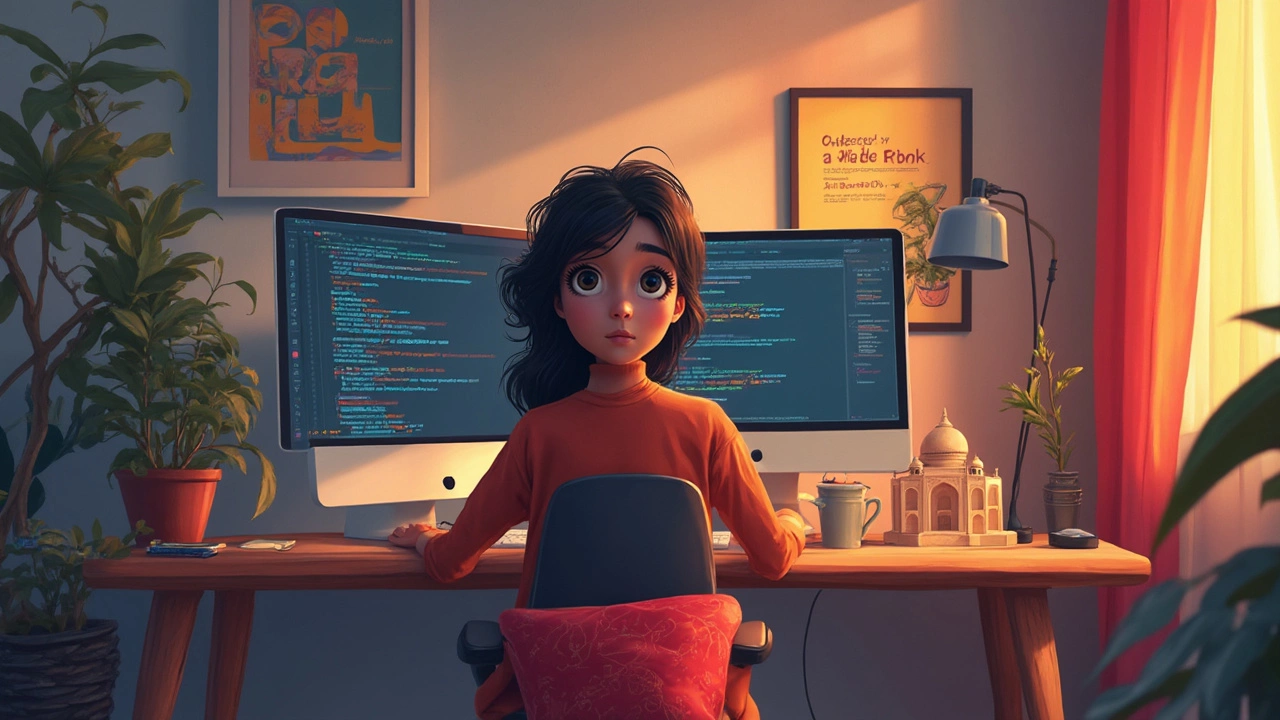If you’ve ever Googled “how long does it take to learn JavaScript?” you already know the answers are all over the place. Some say two weeks. Others claim you need years before you’re employable. The truth? It’s not about ticking off a set number of hours. Picking up JavaScript in a realistic timeframe depends a ton on your goals, background, and how you actually learn. It’s a little messy, sometimes frustrating, but absolutely doable—whether you want to tinker with websites or launch a development career.
What "Learning JavaScript" Really Means
JavaScript sounds like just another programming language, right? Well, it’s actually the backbone of most stuff you click and tap on the internet. Every little dropdown menu, animation, or shopping cart you use? There’s a good chance JavaScript is making it work. But when someone asks, “How long to learn JavaScript?” the question is loaded. Are you talking about writing your first script? Being fluent enough to build a website? Or mastering frameworks like React and Node.js?
There’s no official finish line. You’re never “done.” Take it from Kyle Simpson, author of the You Don’t Know JS book series, who once said:
“JavaScript is always in a state of change. The trick is to keep moving forward—just enough to not get lost.”
Let’s break it down by milestones:
- Basic Syntax and Concepts: Functions, variables, loops, conditionals. This is what you need to write a little code or pass that first online quiz.
- DOM Manipulation: Making stuff actually happen on web pages—maybe toggling menus, handling button clicks, form validation, interactive elements.
- Asynchronous JavaScript (AJAX, fetch, promises, async/await): Fetching data from servers, handling user events without reloading the page.
- Frameworks and Libraries: React, Vue, Angular. These are how modern job-ready sites are built. On top of JavaScript itself, you’ll need extra skills here.
- Full Stack Skills: Going deeper with Node.js, building server APIs, databases, authentication, and deploying real production websites.
Most beginners only need that first skill set to dabble, but building anything solid—something you’d actually use—will need more. Sometimes, it helps to check out how long it took others. In Stack Overflow’s February 2024 developer survey, developers who rated themselves “confident” in JavaScript reported coding in it for 1.5 years on average. That’s not “just learned it last weekend,” but it’s definitely not ten years either.
Beginner to Intermediate: What’s a Realistic Timeline?
This is where the numbers matter. If you start from zero coding experience, you’ll probably need at least a month to truly “get” the basics—all those variables, for-loops, and if-else decisions. Not just copy-pasting code, but actually writing your own solutions. Most people can follow along with a beginner YouTube playlist in a couple weekends, but that’s just surface-level.
Here’s a sample timeline used by popular bootcamps and online courses:
| Milestone | Estimated Time (hours) | Mode |
|---|---|---|
| Basics (syntax, variables, functions) | 20-40 | Self-study/video tutorials |
| DOM Manipulation | 40-60 | Projects/practice |
| Asynchronous Programming | 20-30 | Mini-apps |
| Working with APIs | 20 | Project-based |
| Frameworks/libraries (e.g. React) | 60-80 | Guided courses + projects |
Grand total to reach a job-ready, “intermediate” level? Usually between 250 to 350 hours of consistent, focused study and hands-on programming. If you do it part-time, maybe two hours a day, that’s around five months. If you can study full time (say, you’re between jobs or on summer break), you could realistically cover this ground in around 2-3 months.
But this is just the “learning” part. To actually write good code, you need to build real stuff. Tutorials get repetitive fast. Building your own simple apps—like a to-do list, weather dashboard, or quiz game—always exposes new gaps you’ll have to fill on the fly. That’s the magic (and headache) of coding: you don’t know what you don’t know until you sit down and try to solve a real problem.
One more thing—having a friendly community makes a massive difference. According to freeCodeCamp, coders who regularly ask questions and help others are 2x more likely to stick with it for over a year. You don’t have to grind solo. Sharing wins, asking for feedback, and troubleshooting together turns learning from something scary into something fun.

Common Pitfalls & How to Learn Smarter, Not Harder
Most people fall into the trap of endlessly watching tutorials or reading articles without practicing. The infamous “tutorial hell.” You end up knowing a lot about JavaScript but can’t actually build anything from scratch. Here’s what actually helps you turn book knowledge into real skill:
- Make everything hands-on. After each new concept, code a little project or add a new feature to something you already built. Even a rough little calculator beats a hundred quiz questions.
- Start small. Fancy frameworks look cool, but plain JavaScript (“vanilla JS”) is what powers everything underneath. Trying to master React before understanding loops or objects is like trying to run before you walk.
- Debug often, debug loud. Break things on purpose. Change numbers, delete lines, add logs everywhere. Learning how to spot and fix errors early on builds way more confidence than just reading docs.
- Join the conversation. GitHub, Discord servers, Reddit’s r/learnjavascript—ask questions, answer others, and talk through your thinking. It’s not as scary as it looks.
- Review, don’t just rage ahead. Every couple weeks, go back and clean up old code. Refactor. Try to explain what you did. This is where those “aha!” moments hide.
- Use version control (Git) right away. It’s not just for big projects. The more snapshots you have, the less afraid you’ll be to experiment.
People love to compare JavaScript to learning a spoken language. It’s not a perfect match, but there’s something to it. You pick up new words fast by listening, but you only get fluent by speaking and messing up. Immersion—lots of little projects, lots of poking at code—is a game changer.
Sometimes motivation falls flat halfway through. That’s normal. Instead of grinding through endless tutorials, pick one simple app idea that actually excites you (maybe something to track your workouts or help with a hobby). There’s something about seeing your own project come to life that powers you through those trickier bits—like understanding closures or callbacks for the first time. Hack, tweak, and share. Break the ice with a real, ugly, but working project.
What Happens After You’re “Done”: Going Beyond the Basics
No one really “finishes” learning JavaScript, and there’s no test that says you’re officially a developer. Once you’re comfortable building little projects solo, the bar just keeps moving. Job listings in 2025 ask for skills like working with APIs, handling async data, using TypeScript (JavaScript’s stricter sibling), and building something with React or Next.js.
So what should you focus on to level up from basic skills to something job-ready? Two things top the list—shipping polished projects and learning how to google your errors like a pro. Here’s what real junior devs work with daily:
- Deep-diving into the "weird parts" of JavaScript—like scope, closures, this/bind, event bubbling
- Debugging in browser dev tools (Chrome, Firefox, etc.)
- Migrating plain JS code to a modern framework (like React or Svelte)
- Reading and understanding other people’s code on GitHub
- Solving coding exercises (LeetCode, Codewars) to practice logic
- Connecting JS apps to real data—public APIs, Firebase, back ends
- Adding basic tests to check if your code still works after updates
- Pair programming with other developers (in person or online)
Here’s something that’ll surprise you. According to data from the 2025 Stack Overflow survey, 68% of working JavaScript developers said they learn something new at least every other week—a hot new framework, a browser API update, or just a weird edge case from a bug report. That’s job security, not a sign of weakness.
If you’re thinking of joining a bootcamp or applying to jobs, expect to spend some time after “learning” JavaScript working on a couple larger showcase projects. Examples: a simple blog editor, a React photo gallery, or a real-time chat. These prove you can tackle real-world problems—not just classroom examples.
Your learning never fully ends, but that’s what makes coding a craft and not just a chore. Want to really stick with it? Find a dev community you click with. Practice in public. Share wins (and fails). Forget about perfection—aim for progress every week. That’s the secret sauce.



